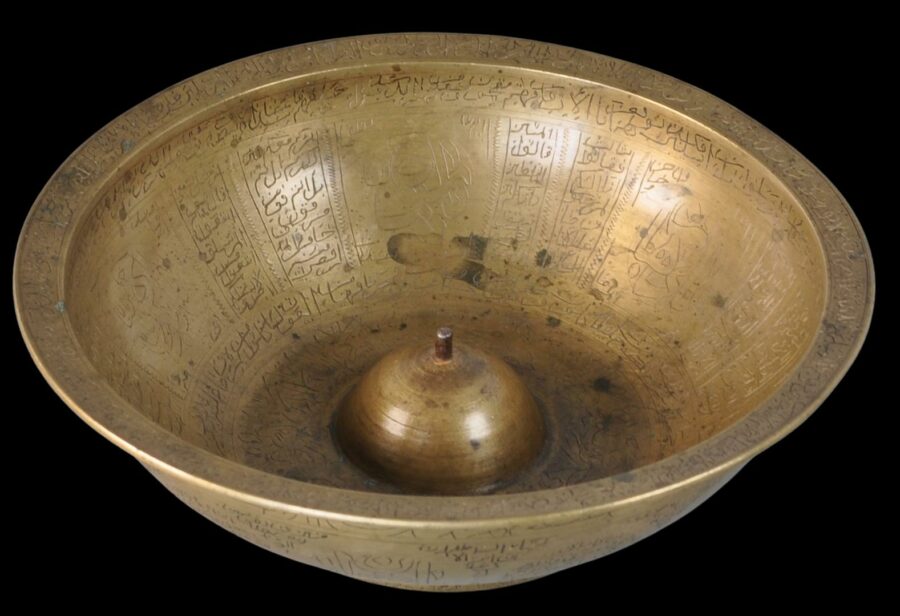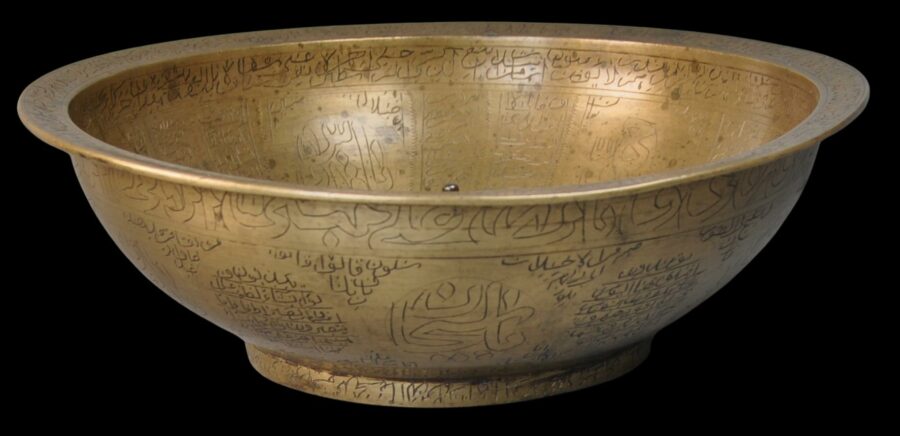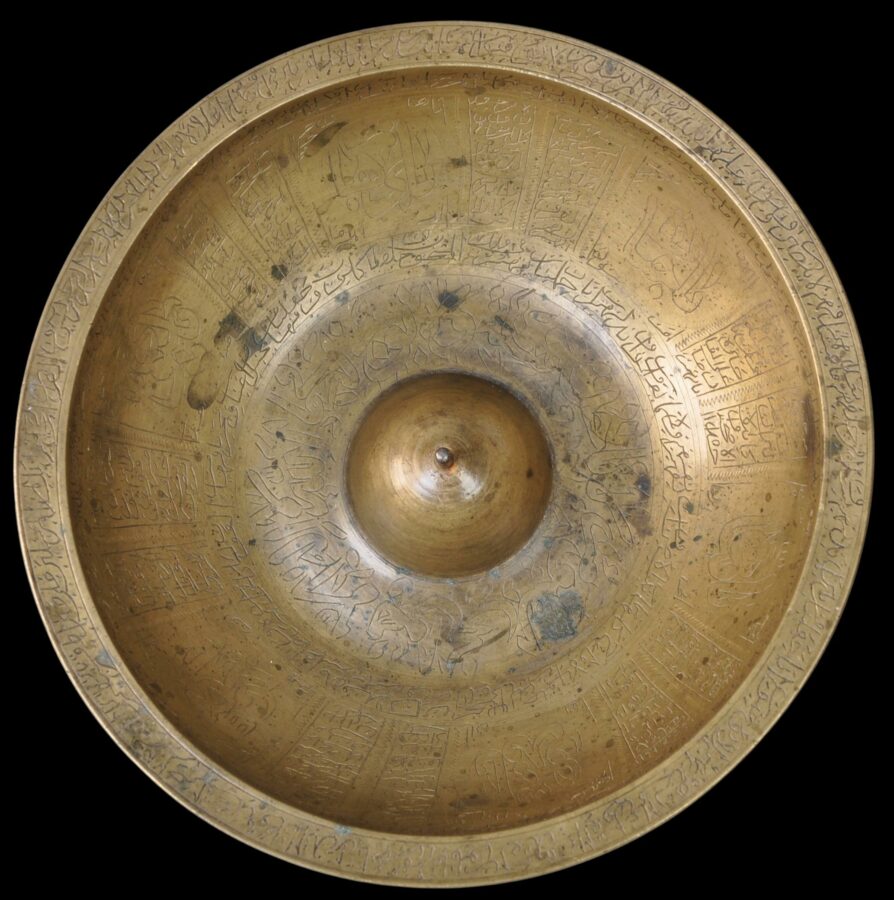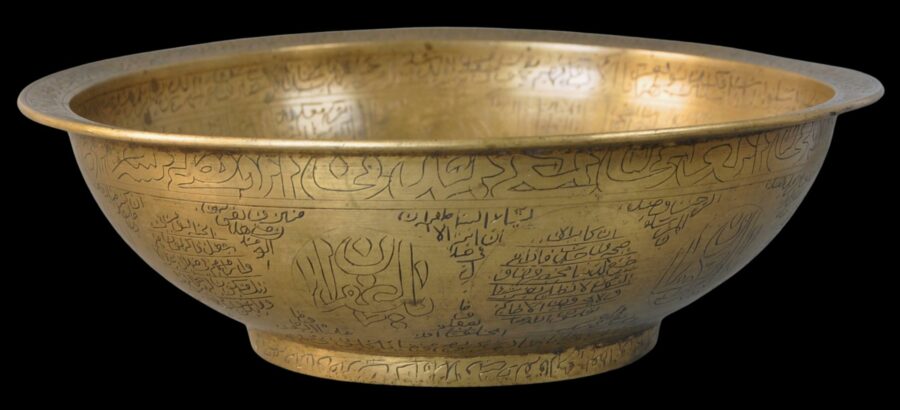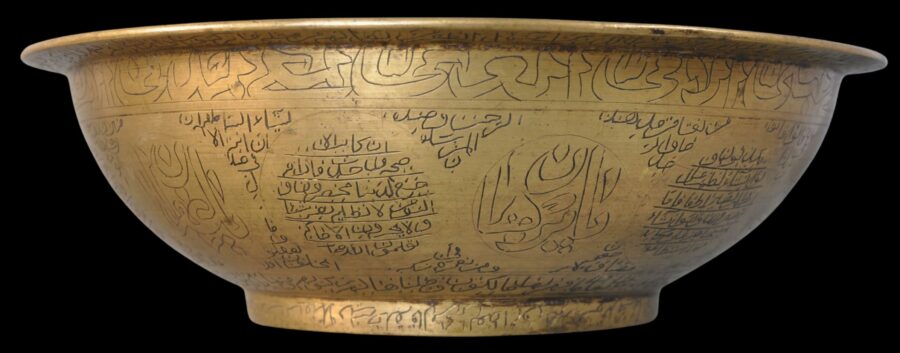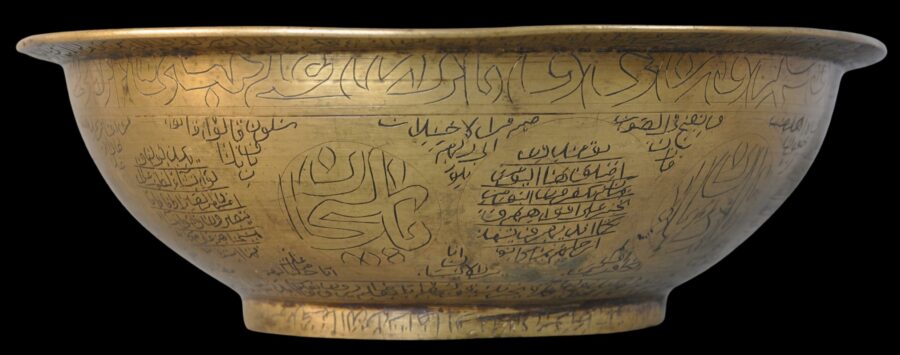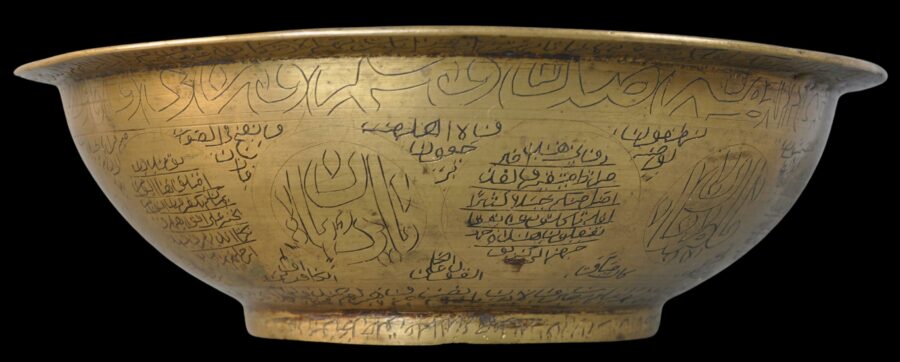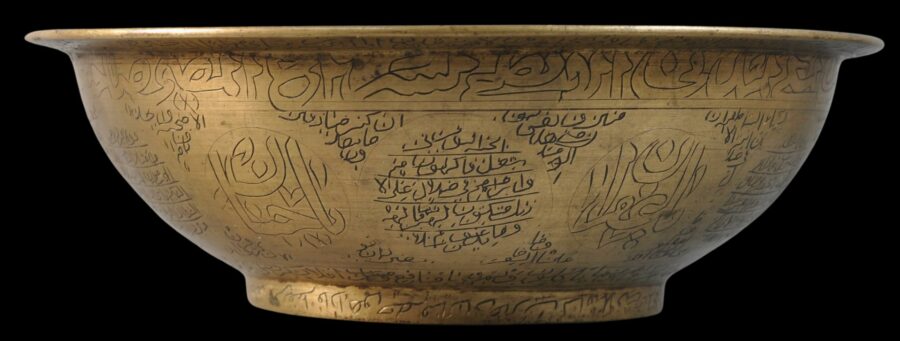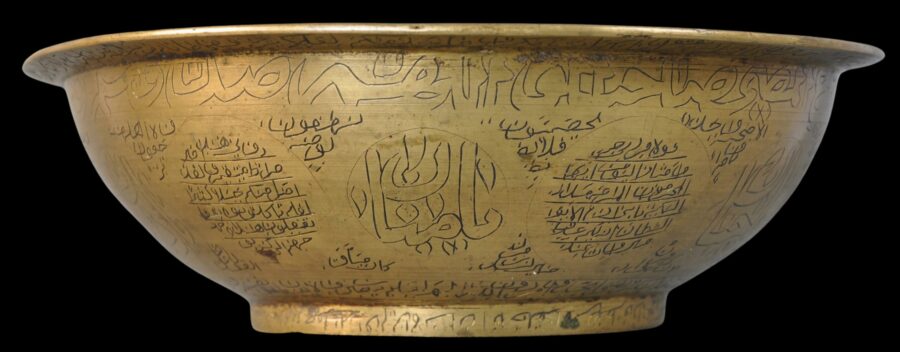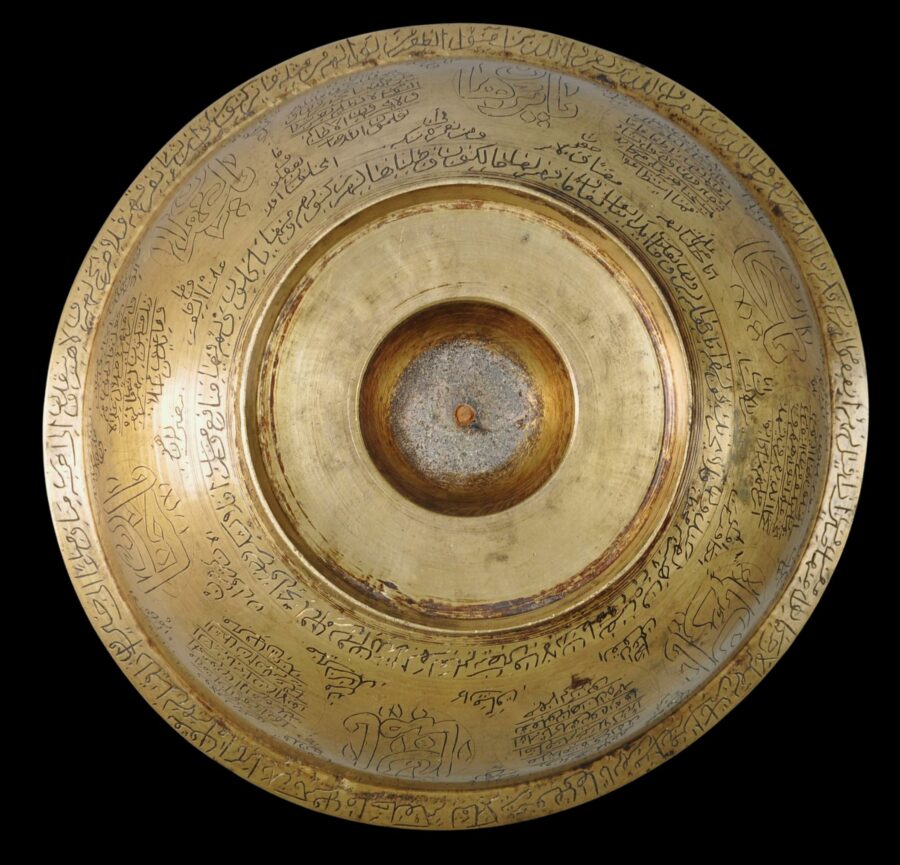Enquiry about object: 8476
Islamic Engraved Brass ‘Magic’ Bowl
Northern India or Iran (Persia) 18th-19th century
diameter: 21.1cm, height: 7cm, weight: 788g
This ‘magic’ or medicinal bowl dates to eighteenth or nineteenth century and is either from northern India (where such bowls were known as a tawiz) or from Persia (Iran). Of engraved brass, the interior has a high, hemi-spherical central boss. It has an engraved, everted rim, and a low ring foot.
The interior base and sides are engraved with panels of Koranic naskh script.
The rim is flat and engraved with lines of script that run right round the bowl. The underside of the rim is also inscribed.
The exterior side is decorated with a series of roundels of more script. The foot is further inscribed.
Magic bowls did not offer continuous talismanic protection but were used only when needed. Liquid would be placed in the bowl and the Koranic verses and magical diagrams would imbue the liquid with curative and protective properties. An afflicted person would then drink the liquid in the hope of relief.
The bowl here is in fine condition. It has a very good patina and obvious age.
References
Bussabarger, R.F. & B. Dashew Robins, The Everyday Art of India, Dover, 1968.
Maddison, F. & E. Savage-Smith, The Nasser D. Khalili Collection of Islamic Art: Science, Tools & Magic, Part One: Body and Spirit, Mapping the Universe, The Nour Foundation, 1997.


